
JOURNAL OF FUSION ENERGY
Scope & Guideline
Pioneering discoveries in sustainable energy solutions.
Introduction
Aims and Scopes
- Fusion Plasma Physics:
Research on the fundamental physics of plasma behavior in fusion devices, including stability, confinement, and transport phenomena. - Diagnostic Techniques:
Development and application of diagnostic methods for measuring plasma parameters, including advanced imaging and sensing technologies. - Material Science for Fusion:
Studies on materials used in fusion reactors, particularly regarding their performance under extreme conditions, including heat and neutron flux. - Computational Modeling and Simulation:
Use of computational tools and simulations to model fusion processes, predict outcomes, and optimize reactor designs. - Innovative Fusion Technologies:
Exploration of new technologies and methodologies for improving fusion reactor performance and efficiency, including advanced cooling systems and fuel cycles. - Environmental and Economic Aspects of Fusion:
Investigation into the societal impacts, regulatory frameworks, and economic feasibility of fusion energy as a sustainable power source.
Trending and Emerging
- Artificial Intelligence and Machine Learning Applications:
Growing incorporation of AI and machine learning in fusion diagnostics and simulations, indicating a trend towards leveraging advanced computational methods for enhanced analysis and prediction. - Liquid Metal Technologies:
Increased focus on the use of liquid metals for plasma-facing components and divertors, highlighting their potential to improve heat management and material performance. - Integrated Fusion Energy Systems:
Research on integrated systems that combine various fusion technologies, including hybrid approaches with other energy sources, to enhance efficiency and viability. - Socioeconomic and Policy Aspects:
Emerging studies addressing the social acceptance, economic implications, and regulatory frameworks surrounding fusion energy, reflecting a recognition of the broader context in which fusion operates. - Advanced Plasma Diagnostics:
Innovations in diagnostic techniques, particularly those that utilize real-time data processing and advanced imaging methods, are gaining traction as essential tools for enhancing experimental fusion research.
Declining or Waning
- Traditional Fusion Reactor Designs:
There has been a notable decrease in studies centered around conventional tokamak designs, as researchers increasingly explore alternative configurations and advanced concepts. - Basic Theoretical Studies:
Research that focuses solely on theoretical aspects without experimental validation is becoming less prominent, as the journal emphasizes applied research with practical implications. - Narrowly Focused Research on Specific Materials:
There is a reduction in papers that focus exclusively on specific materials without broader implications for fusion technology, as interdisciplinary approaches gain favor.
Similar Journals
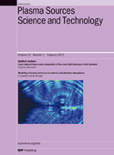
PLASMA SOURCES SCIENCE & TECHNOLOGY
Unveiling the Power of Plasma: Where Science Meets Technology.PLASMA SOURCES SCIENCE & TECHNOLOGY is a premier academic journal published by IOP Publishing Ltd, focusing on the innovative field of plasma science and its applications in technology. Established in 1992, the journal has significantly contributed to advancing knowledge in this crucial area, maintaining a robust Q1 quartile ranking in Condensed Matter Physics as of 2023, which reflects its high-impact research dissemination. With an impressive Scopus ranking of 74 out of 434 in the field of Physics and Astronomy—specifically within Condensed Matter Physics—this journal stands out as a leading source for researchers and professionals dedicated to the study and application of plasma technologies. While it is not an Open Access journal, the published works are accessible through institutional subscriptions, making them available to a wide academic audience. The journal aims to provide a platform for significant contributions related to plasma physics, fostering scientific dialogue and collaboration across various disciplines. As it continues through its converged years up to 2024, PLASMA SOURCES SCIENCE & TECHNOLOGY remains essential for anyone involved in the burgeoning exploration of plasma-related scientific advancements.
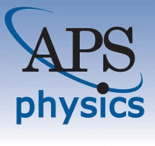
PHYSICAL REVIEW C
Charting New Territories in Nuclear UnderstandingPHYSICAL REVIEW C is an esteemed journal published by the American Physical Society, dedicated to advancing knowledge in the fields of nuclear and high-energy physics. With a proud ISSN of 2469-9985 and an E-ISSN of 2469-9993, it has established itself as a leading journal, currently ranked in the Q1 category for its field in 2023, positioning itself in the top tier of scholarly publications. Based in the heart of the United States, at One Physics Ellipse, College Park, MD, PHYSICAL REVIEW C is known for its rigorous peer-review process and is a vital platform for researchers to share their pioneering findings. As part of a prestigious lineup backed by an impressive impact factor, this journal garners significant attention, reflected in its Scopus ranking as #18 out of 87 in the Nuclear and High Energy Physics category, placing it within the 79th percentile. While it currently does not offer open access options, it remains an essential resource for professionals and students seeking to deepen their understanding of nuclear interactions, reaction dynamics, and the fundamental principles governing subatomic particles. The convergence of innovative research from 2016 to 2024 makes it a timely reservoir for groundbreaking studies, thus reinforcing its importance in the scientific community.

ATOMIC DATA AND NUCLEAR DATA TABLES
Bridging theory and application in atomic and nuclear research.ATOMIC DATA AND NUCLEAR DATA TABLES, published by Academic Press Inc Elsevier Science, is a leading journal in the fields of atomic and molecular physics, as well as nuclear and high energy physics. With an ISSN of 0092-640X and an E-ISSN of 1090-2090, this esteemed journal has been providing comprehensive data tables and significant research insights since its establishment in 1969. Spanning until 2024, it continues to serve as an invaluable resource for researchers and professionals aiming to deepen their understanding of atomic interactions and nuclear processes. Holding a commendable Q2 ranking in both relevant categories, it is recognized for its impact, reflected in Scopus rankings, where it ranks 25th out of 87 in Nuclear and High Energy Physics, and 87th out of 224 in Atomic and Molecular Physics. While it does not offer open access, the journal remains a crucial repository for high-quality data essential for scientific endeavors and advancements in these complex fields.

Recent Contributions to Physics
Championing open access to transformative physics insights.Recent Contributions to Physics is a distinguished journal published by AL-FARABI KAZAKH NATIONAL UNIVERSITY, focusing on the latest developments and research breakthroughs in the field of physics. Established as an open access journal since 2008, it aims to facilitate the wide dissemination of knowledge by allowing researchers, professionals, and students worldwide to access high-quality content without barrier. Featuring a diverse range of topics within physics, from theoretical innovations to practical applications, this journal is an essential resource for anyone seeking to stay at the forefront of scientific advancement. Its commitment to quality and accessibility not only enhances the impact of research in the scientific community but also promotes collaboration across disciplines. With its dedication to fostering a vibrant academic dialogue, Recent Contributions to Physics is poised as a key contributor to the future of physics research.

PLASMA SCIENCE & TECHNOLOGY
Unraveling the Mysteries of Plasma BehaviorPLASMA SCIENCE & TECHNOLOGY is a distinguished academic journal published by IOP Publishing Ltd, focusing on the realm of condensed matter physics. With its inception in 2000 and continuing through 2024, the journal serves as a vital platform for disseminating groundbreaking research and developments in plasma science, encompassing experimental and theoretical studies that advance our understanding of plasma behavior and its applications. Although the journal is not open access, its insights are invaluable for researchers, professionals, and students devoted to the intricate physics of plasmas, particularly given its respectable Q2 quartile ranking within its category as of 2023 and a notable Scopus rank that places it within the 44th percentile among its peers. Published from the United Kingdom, the journal aims to foster collaboration and innovation in this essential field of study.

Journal of X-Ray Science and Technology
Driving Excellence in Radiological ResearchThe Journal of X-Ray Science and Technology, published by IOS PRESS, serves as a premier platform for researchers and professionals dedicated to advancements in the fields related to X-ray science, imaging techniques, and instrumentation. With an ISSN of 0895-3996 and an E-ISSN of 1095-9114, this journal has established itself as a vital resource since its inception in 1989. The journal has transitioned through multiple publishing phases, currently converging its years of publication from 2001 to 2024, thereby enriching the scientific community’s understanding across various categories, notably in the second quartile (Q2) of Condensed Matter Physics, Electrical and Electronic Engineering, Instrumentation, Radiation, and Radiology, Nuclear Medicine and Imaging as of 2023.
In addition to its commendable Scopus rankings—which highlight its relevance and impact within the medical and physical sciences—the journal emphasizes the dissemination of impactful research, innovative techniques, and collaborative efforts within the X-ray scientific community. Despite being a subscription-based journal, its contributions are crucial for those aiming to stay at the forefront of research and technological development in these rapidly evolving fields.

BRAZILIAN JOURNAL OF PHYSICS
Fostering Collaboration in Global PhysicsBRAZILIAN JOURNAL OF PHYSICS, published by SPRINGER, is a prominent platform dedicated to the dissemination of research within the realm of physics and astronomy. With an ISSN of 0103-9733 and E-ISSN of 1678-4448, this esteemed journal has been contributing to the field since its inception in 1996, and it continues to be pivotal in showcasing innovative studies and breakthroughs. The journal is categorized in the Q4 quartile for the year 2023, reflecting a dedicated focus on advancing knowledge across a variety of disciplines, particularly in general physics and astronomy, where it ranks 126th out of 243 in Scopus rankings. Although it currently does not operate under an open-access model, it remains an invaluable resource for researchers, professionals, and students eager to enhance their understanding of complex physical principles and developments. The journal is committed to promoting high-quality research, bridging gaps in knowledge, and fostering collaboration within the global physics community.
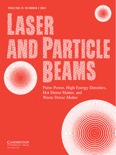
LASER AND PARTICLE BEAMS
Connecting Researchers through Open Access InsightsLASER AND PARTICLE BEAMS is a distinguished peer-reviewed journal published by Hindawi Ltd, specifically focusing on the fields of atomic and molecular physics, optics, condensed matter physics, and electrical and electronic engineering. With its commitment to advancing knowledge in these areas, the journal has transitioned to an Open Access model since 2021, ensuring that research findings are readily accessible to the global scientific community. Covering an extensive publication history from 1983 to 2023, it serves as an important platform for researchers, professionals, and students interested in the latest developments and applications of laser technologies and particle beam methodologies. Although currently categorized in Q4 for two of its areas and Q3 for electrical engineering in the 2023 base metrics, LASER AND PARTICLE BEAMS is positioned to foster innovative research and discussions within the laboratory and applied settings, contributing significantly to advancements in its respective disciplines. The journal encourages contributions that push the boundaries of knowledge and seeks to attract a diverse array of submissions to enhance its impact in the scientific community.
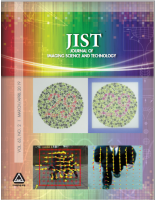
JOURNAL OF IMAGING SCIENCE AND TECHNOLOGY
Bridging Disciplines through Imaging ExcellenceJOURNAL OF IMAGING SCIENCE AND TECHNOLOGY, published by I S & T - SOC IMAGING SCIENCE TECHNOLOGY, is a pivotal resource in the realms of imaging science, optics, and materials. With its ISSN 1062-3701 and E-ISSN 1943-3522, this journal has been disseminating influential research since 1993 and continues to be a vital platform for scholars up to 2024. Despite its varied quartile rankings across disciplines—such as Q4 in Atomic and Molecular Physics and Optics, and Q3 in Chemistry (Miscellaneous) and Electronic, Optical and Magnetic Materials—it provides an essential forum for innovative ideas and advancements. The journal’s focus on interdisciplinary connections encourages collaboration among researchers in the fields of chemistry, computer science, and physics. Researchers, professionals, and students interested in exploring the latest imaging technologies and methodologies will find invaluable insights within its pages, making it a significant addition to their academic libraries.
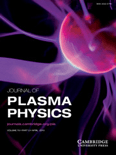
JOURNAL OF PLASMA PHYSICS
Transforming ideas into groundbreaking plasma research.Welcome to the JOURNAL OF PLASMA PHYSICS, a premier publication dedicated to advancing understanding and research in the field of plasma physics. Published by Cambridge University Press, this journal has been a pivotal resource since its inception in 1967, supporting scholars and professionals engaged in the innovative exploration of plasma phenomena. With an impressive Q1 rating in Condensed Matter Physics, the journal not only holds a significant position in the academic community but also ranks within the top 50th percentile in the Scopus database. Although it currently does not offer open access, the journal provides a wealth of valuable research contributions aimed at fostering knowledge and collaboration among researchers, professionals, and students alike. The Journal of Plasma Physics is committed to publishing high-quality articles that push the boundaries of knowledge, ensuring its vital role in the ever-evolving landscape of physics research.